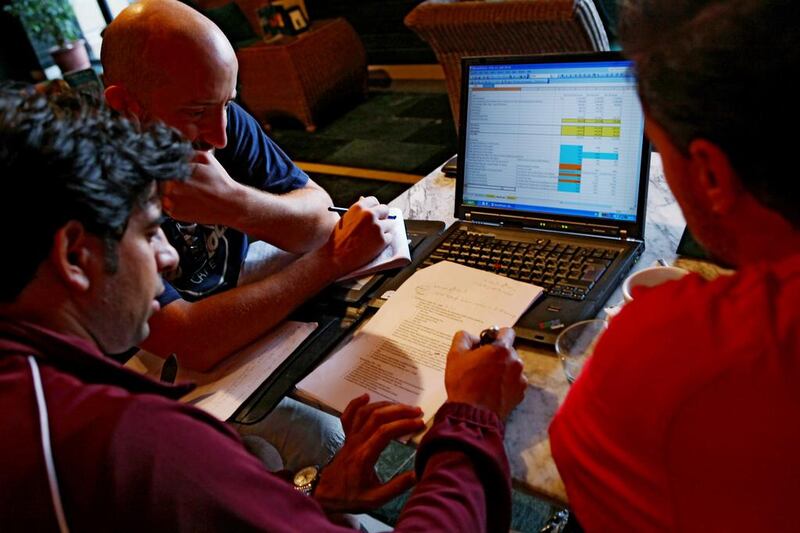In the debate over the changes under way in Arab countries, one critical element is missing: a generational perspective. Such a perspective grasps how socioeconomic factors have shaped different age groups, allowing governments and businesses to address the different generational needs, perceptions and priorities for how society should develop. Although increasingly adopted elsewhere, the Arab region has yet to take advantage of this approach to framing social, economic and employment policy.
Many Arab governments have developed policies specifically aimed at helping different segments of their population, such as youth and women, both of which have high unemployment levels. Similarly, many companies are increasingly directing their marketing at these segments. These laudable efforts, however, only go part of the way.
Such a segmented approach overlooks the distinct characteristics of the Arab region’s generations and their interplay, thereby missing an opportunity to bring together these dynamic differences in a positive manner. To better understand the Arab generations, we recently surveyed nearly 3,000 people in six Arab countries, breaking them down into three groups:
• the Arab national generation (ages 49 to 65);
• the Arab regional generation (ages 36 to 48);
• and the Arab digital generation (ages 15 to 35).
We found that all three generations share such common beliefs as cultural values. Yet they also have significant differences, which policymakers and business leaders in the region must understand. For example, regarding working styles, we found that younger workers often perceive older workers as slow and lacking in communication skills. By contrast, the older generations see younger workers as difficult to deal with and “impatient”. Younger employees were also seen to bring some positive qualities, such as innovative ideas and taking the initiative.
These differences can lead to misunderstandings, especially about what each group considers the “right” way to work. Older people – as elsewhere in the world – often have a traditional view of employment, such as set hours in the office. By comparison, young people are more flexible, stressing performance over the number of hours behind a desk. With the proper understanding, however, these differences can be a potential source of economic advantage, with diverse age groups bringing their complementary strengths to companies.
In addition, the technology-orientated enterprises that increasingly drive economic growth in knowledge-based economies require the qualities exhibited by younger Arabs, the digital generation. As the technology sector becomes more important in the region – fuelled through active efforts by governments – the younger generation's qualities, such as risk-taking, should be cultivated.
Similarly, while our research identified differences in the frequency with which the Arab generations use technology, the gap is likely to shrink as digital devices become simpler and more accessible. The older generations were far more likely to use desktop computers, while younger generations were more likely to use laptops, smartphones, and tablets.
As mobile technology becomes pervasive, however, workplaces will become more digital, converging towards the technology habits of the Arab digital generation. Designed correctly, the workplace of the future can boost productivity, improve employee morale and attract the next generation of talent by allowing them the flexibility that they need for higher productivity.
The survey’s technology findings also have significant implications for government communications. For the older generations, much of the political discourse still occurs face-to-face, while younger generations increasingly discuss matters through blogs and social media. This means that governments should adapt to new ways of interacting with their citizens. Many governments are only starting to engage with constituents through social media.
For policymakers, our findings lead to several clear priorities. First, they must identify and utilise each generation’s distinct attributes, so that the region’s changing demographics become a source of strength. Second, they should also learn the language of social media by using digital technology to offer e-government services and communications that are more relevant and transparent to their constituents – building stronger connections and more stable societies over time.
For the private sector, adopting a generational perspective allows companies to build multigenerational workforces that feature complementary skills. Business leaders should also adapt their marketing to take into account how social media can influence purchasing decisions.
If the Arab region is to fulfil its economic potential – with inclusive economic growth and an expanding technological base – its government and business leaders must understand generational differences and leverage the strengths and capabilities of all citizens. Viewed in this way, the Arab region’s generational differences are a source of economic strength that can boost development.
About the authors: Ramez T Shehadi and Jayant Bhargava are respectively partner and principal at Booz & Company, and Hatem Samman and Mounira Jamjoom, respectively the director and senior research specialist at the Ideation Center, Booz ’s think tank in the Middle East





